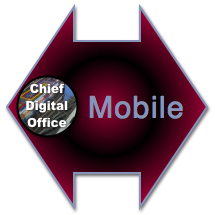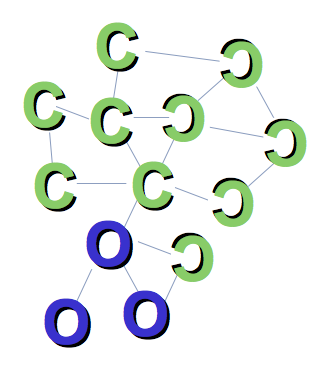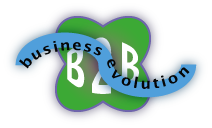 How Mobile Transforms Relationships Between Brands and Customers presents underappreciated aspects of mobile user behavior before outlining three approaches for engaging customers and other stakeholders. How Mobile Transforms Relationships Between Brands and Customers presents underappreciated aspects of mobile user behavior before outlining three approaches for engaging customers and other stakeholders.
As outlined in Ubiquitous Computing Primer, “mobile” is much more than a channel or platform internet-connected devices. By any measure, the Internet’s information and utility are growing exponentially, and mobile devices put the Internet in people’s pockets, so they transform human capabilities and experience.
People plus the Internet have expanded abilities to act and perform. For example, having the optimal assortment of travel apps enables people to avoid many problems and capitalize on opportunities; they miss planes less often, pay less for hotels and suffer less crime. The same holds true for most human endeavors, so people without mobile internet are increasingly at disadvantage. [For more context, see: 1) the “Geoweb” and “Web 3.0.”
How Mobile Transforms Relationships Between Brands and Customers is Part2 of The CDO Guide to Mobile for Digital Transformation.
[…]
 Personal Individualized Experience is the DNA of digital transformation. It refers to using an optimal mix of people and digital technologies to provide personal interactions at scale, so it’s central to the mission of chief digital officers and CEOs and boards who hire them. Prior to digital and social technologies, organizations faced a trade-off between “personal” and “efficient” interactions with their stakeholders (customers, clients, employees, partners, regulators… hereafter “users”). Now this is no longer true; they can provide personal interactions at scale, once they learn how and where to interact efficiently and authentically. Personal Individualized Experience is the DNA of digital transformation. It refers to using an optimal mix of people and digital technologies to provide personal interactions at scale, so it’s central to the mission of chief digital officers and CEOs and boards who hire them. Prior to digital and social technologies, organizations faced a trade-off between “personal” and “efficient” interactions with their stakeholders (customers, clients, employees, partners, regulators… hereafter “users”). Now this is no longer true; they can provide personal interactions at scale, once they learn how and where to interact efficiently and authentically.
Used well, digital and social technologies retain an authentic human element while digitizing key aspects of relating to people. Therefore, organizations/firms/brands (hereafter “firms”) can now provide the Personal Individualized Experience (PIE). This post explains the three components of PIE and shows how firms can use them to build and maintain authentic and profitable relationships with users.
[…]
 [UPDATED] Social business strategy use cases represent scenarios in which most organizations find themselves, and they reflect some of the choices of which CDOs, CMOs and CEOs may use as they plan to evolve their enterprises in order to either improve returns or simply remain relevant in volatile markets. [UPDATED] Social business strategy use cases represent scenarios in which most organizations find themselves, and they reflect some of the choices of which CDOs, CMOs and CEOs may use as they plan to evolve their enterprises in order to either improve returns or simply remain relevant in volatile markets.
Social business strategy is inherently transformational to large organizations whether they are in commercial, nonprofit or government sectors. All organizations are hives of people communicating and collaborating to execute business processes (“work”). Digital social technologies have reduced the cost of communication (and therefore much collaboration and work) by an order of magnitude (roughly ten times). Collaboration and innovation, before digital social technologies, were slow and expensive. Now they are very fast and inexpensive—when organizations learn how to use them. Organizations that learn how are more responsive to their constituents and customers, so the market rewards them—and will increasingly punish those that lag too far.
These use cases focus on building enterprise social business internal capability, and they are also helpful to consider when selecting social business advisors. Please […]
 Anonymity, Marketing and Predicting the Future shows that, although each culture has its own concepts of “anonymity” and “marketing,” anonymity will prove to have been a temporary phenomenon in most human cultures because communications technologies are counteracting it. Moreover, based on my studies of and experience with sociology, evolutionary psychology and technology, I observe that 20th century marketing is grounded in anonymity, so we can predict the future of marketing by exploring anonymity and its relationship to marketing. Anonymity, Marketing and Predicting the Future shows that, although each culture has its own concepts of “anonymity” and “marketing,” anonymity will prove to have been a temporary phenomenon in most human cultures because communications technologies are counteracting it. Moreover, based on my studies of and experience with sociology, evolutionary psychology and technology, I observe that 20th century marketing is grounded in anonymity, so we can predict the future of marketing by exploring anonymity and its relationship to marketing.
In brief, marketing’s influence is most poignant when anonymity is high and the marketing “target” is ignorant of the product/service and how to use it. In this scenario, the target is most open marketing’s influence. Read on to learn how marketing is related to anonymity, where anonymity is going and how marketing can transform to strengthen its influence.
Marketing organizations that do not transform will be sidelined because anonymity is dissipating fast.
[…]
How Marketers Are Pushing the Wrong Button on Mobile

Mobile advertising is flawed because it interrupts. CMOs’ continued use of such outmoded marketing tactics isn’t pretty, like bursting market bubbles or parties at which one has stayed too long. Screen-hogging banners or tricky apps are unnecessary for those who understand the mobile experience and how to add value; however, they are very effective for alienating clients and customers. As Stan Rapp puts it, “Don’t do things to people (do things with them).” In the interest of doing mobile right, I’ll juxtapose the mobile experience with advertising to show how inappropriate much of it is before suggesting how marketers and brands can add value and avoid destroying trust.
“Everybody hates digital ads.” This is a refrain I’ve heard forever, and I have never heard anyone say that they like them. People don’t even like big screen […]
Top B2B Salesperson Trust Killers Revealed discusses the results of targeted B2B sales research I conducted on LinkedIn and features comments from many survey respondents.

One of the key takeaways of The Dynamics of Change video was trust’s importance to B2B prospects’ risk management practices. To explore trust’s importance to B2B sales, I surveyed dozens of seasoned B2B sales executives, including clients and salespeople, in this LinkedIn Poll. The results reveal the nuances of trust and how salespeople must constantly challenge themselves to focus on trust, relationship and execution. For example, respondents said that too many salespeople fumble the ball on fundamentals.
B2B sales is a challenging proposition in normal times, but the challenging global economic malaise has only made budgets tighter and sales more daunting. In large B2B deals, salespeople have to build a significant level of trust with prospects before any deal can be done. This analysis aims to help firm executives and sales leaders improve performance by increasing trust with prospects and clients.
[…]
Customer Service Is the New Marketing shows how CMOs can leverage digital world of mouth by leading teams to serve people publicly.
 In most brand organizations, marketing investments rest on 20th century marketing principles whose results are diminishing every year. At the same time, an increasing portion of products and services are commoditizing, which puts more pressure on marketing to “create” differentiation and value. In many cases, there is no escape—except by changing the rules. Here I’ll show how marketing can reinvent itself by using social business to tap a hidden gold mine. In most brand organizations, marketing investments rest on 20th century marketing principles whose results are diminishing every year. At the same time, an increasing portion of products and services are commoditizing, which puts more pressure on marketing to “create” differentiation and value. In many cases, there is no escape—except by changing the rules. Here I’ll show how marketing can reinvent itself by using social business to tap a hidden gold mine.
The Threat: Dire Straits in Marketing
Marketing as a profession emerged in leading economies during the mid 20th century, when manufactured products were novelties in many categories. Marketers came to assume that they could “create an image” or “brand” using the mass communications to which few had access. Individual customers had no leverage because word of mouth was analog. Word of mouth has always been the most trusted source of product or service information, but it had no leverage until social peer-to-peer technologies emerged. […]
B2B Customers Getting Social Fast: How Marketing and Sales Can Evolve explains how clients/customers are smarter and want a new kind of relationship | The new economics of business reputation
 While preparing to launch Social Business Services for B2B Sales in January 2012, I have been engaged in its Ecosystem Audit. I have plumbed online conversations about B2B Sales and Marketing adoption of social business (erstwhile social media). I have been struck by a recurring realization: a large part of Marketing and Sales as we know them is significantly out of alignment with B2B customers. Social business is permeating customer networks throughout the economy and changing customer behavior and expectations. This has created a rare opportunity for B2B marketing and sales people who understand and respond ahead of the market. If I’m right, this could be one of the most important posts you read this year. While preparing to launch Social Business Services for B2B Sales in January 2012, I have been engaged in its Ecosystem Audit. I have plumbed online conversations about B2B Sales and Marketing adoption of social business (erstwhile social media). I have been struck by a recurring realization: a large part of Marketing and Sales as we know them is significantly out of alignment with B2B customers. Social business is permeating customer networks throughout the economy and changing customer behavior and expectations. This has created a rare opportunity for B2B marketing and sales people who understand and respond ahead of the market. If I’m right, this could be one of the most important posts you read this year.
Two quick examples of misalignment: one of Marketing’s underlying assumptions is that it is not economically feasible to have large-scale one-on-one customer conversations, so marketing must […]
How Social Networks Boost Market Efficiency for B2B Buyers and Sellers explains how to use LinkedIn to change the rules of business development
 Since the early 2000s, everyone has struggled to develop measurable economic models for social media and Web 2.0, mostly with little success. During 2007 and 2008, CSRA has worked with clients on several levels hammering out models to pass enterprise muster, and here I will briefly share one that shows considerable promise for its practicality and utility to businesses. The immediate context is B2B business development and sales, but it is applicable to numerous other enterprise processes as well. Since the early 2000s, everyone has struggled to develop measurable economic models for social media and Web 2.0, mostly with little success. During 2007 and 2008, CSRA has worked with clients on several levels hammering out models to pass enterprise muster, and here I will briefly share one that shows considerable promise for its practicality and utility to businesses. The immediate context is B2B business development and sales, but it is applicable to numerous other enterprise processes as well.
[…]
|
|
 How Mobile Transforms Relationships Between Brands and Customers presents underappreciated aspects of mobile user behavior before outlining three approaches for engaging customers and other stakeholders.
How Mobile Transforms Relationships Between Brands and Customers presents underappreciated aspects of mobile user behavior before outlining three approaches for engaging customers and other stakeholders.
 Personal Individualized Experience is the DNA of digital transformation. It refers to using an optimal mix of people and digital technologies to provide personal interactions at scale, so it’s central to the mission of chief digital officers and CEOs and boards who hire them. Prior to digital and social technologies, organizations faced a trade-off between “personal” and “efficient” interactions with their stakeholders (customers, clients, employees, partners, regulators… hereafter “users”). Now this is no longer true; they can provide personal interactions at scale, once they learn how and where to interact efficiently and authentically.
Personal Individualized Experience is the DNA of digital transformation. It refers to using an optimal mix of people and digital technologies to provide personal interactions at scale, so it’s central to the mission of chief digital officers and CEOs and boards who hire them. Prior to digital and social technologies, organizations faced a trade-off between “personal” and “efficient” interactions with their stakeholders (customers, clients, employees, partners, regulators… hereafter “users”). Now this is no longer true; they can provide personal interactions at scale, once they learn how and where to interact efficiently and authentically. [UPDATED] Social business strategy use cases represent scenarios in which most organizations find themselves, and they reflect some of the choices of which CDOs, CMOs and CEOs may use as they plan to evolve their enterprises in order to either improve returns or simply remain relevant in volatile markets.
[UPDATED] Social business strategy use cases represent scenarios in which most organizations find themselves, and they reflect some of the choices of which CDOs, CMOs and CEOs may use as they plan to evolve their enterprises in order to either improve returns or simply remain relevant in volatile markets. Anonymity, Marketing and Predicting the Future shows that, although each culture has its own concepts of “anonymity” and “marketing,” anonymity will prove to have been a temporary phenomenon in most human cultures because communications technologies are counteracting it. Moreover, based on my studies of and experience with sociology, evolutionary psychology and technology, I observe that 20th century marketing is grounded in anonymity, so we can predict the future of marketing by exploring anonymity and its relationship to marketing.
Anonymity, Marketing and Predicting the Future shows that, although each culture has its own concepts of “anonymity” and “marketing,” anonymity will prove to have been a temporary phenomenon in most human cultures because communications technologies are counteracting it. Moreover, based on my studies of and experience with sociology, evolutionary psychology and technology, I observe that 20th century marketing is grounded in anonymity, so we can predict the future of marketing by exploring anonymity and its relationship to marketing.

 In most brand organizations, marketing investments rest on 20th century marketing principles whose results are diminishing every year. At the same time, an increasing portion of products and services are commoditizing, which puts more pressure on marketing to “create” differentiation and value. In many cases, there is no escape—except by changing the rules. Here I’ll show how marketing can reinvent itself by using social business to tap a hidden gold mine.
In most brand organizations, marketing investments rest on 20th century marketing principles whose results are diminishing every year. At the same time, an increasing portion of products and services are commoditizing, which puts more pressure on marketing to “create” differentiation and value. In many cases, there is no escape—except by changing the rules. Here I’ll show how marketing can reinvent itself by using social business to tap a hidden gold mine. While preparing to launch Social Business Services for B2B Sales in January 2012, I have been engaged in its Ecosystem Audit. I have plumbed online conversations about B2B Sales and Marketing adoption of social business (erstwhile social media). I have been struck by a recurring realization: a large part of Marketing and Sales as we know them is significantly out of alignment with B2B customers. Social business is permeating customer networks throughout the economy and changing customer behavior and expectations. This has created a rare opportunity for B2B marketing and sales people who understand and respond ahead of the market. If I’m right, this could be one of the most important posts you read this year.
While preparing to launch Social Business Services for B2B Sales in January 2012, I have been engaged in its Ecosystem Audit. I have plumbed online conversations about B2B Sales and Marketing adoption of social business (erstwhile social media). I have been struck by a recurring realization: a large part of Marketing and Sales as we know them is significantly out of alignment with B2B customers. Social business is permeating customer networks throughout the economy and changing customer behavior and expectations. This has created a rare opportunity for B2B marketing and sales people who understand and respond ahead of the market. If I’m right, this could be one of the most important posts you read this year. Since the early 2000s, everyone has struggled to develop measurable economic models for social media and Web 2.0, mostly with little success. During 2007 and 2008, CSRA has worked with clients on several levels hammering out models to pass enterprise muster, and here I will briefly share one that shows considerable promise for its practicality and utility to businesses. The immediate context is B2B business development and sales, but it is applicable to numerous other enterprise processes as well.
Since the early 2000s, everyone has struggled to develop measurable economic models for social media and Web 2.0, mostly with little success. During 2007 and 2008, CSRA has worked with clients on several levels hammering out models to pass enterprise muster, and here I will briefly share one that shows considerable promise for its practicality and utility to businesses. The immediate context is B2B business development and sales, but it is applicable to numerous other enterprise processes as well.